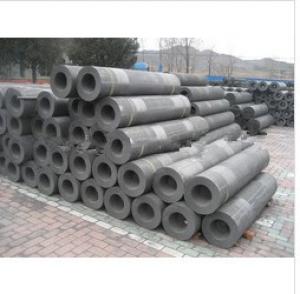When we talk about the heart of industrial production, graphite electrodes take center stage. These cylindrical wonders are the unsung heroes in the world of metallurgy, electric arc furnaces, and even in the production of some gloriously shiny, high-quality steel. But where do they come from? What’s the story behind these graphite wonders? Let’s dive into the fascinating world of graphite electrode raw materials and their supply chain journey.
First things first, let’s talk about the main ingredient – graphite. This naturally occurring form of carbon is the star of our show. It’s not just any carbon, though. It’s the purest form, with a minimum purity level of 99%. That’s right; we’re dealing with some high-grade stuff here. And why is purity so important? Well, it directly affects the quality and performance of the final product – the graphite electrodes.
Now, let’s not forget the supporting cast in this supply chain drama. There are other materials that play a crucial role, such as needle coke, coal tar pitch, and binders. Needle coke, a product derived from petroleum, is used to enhance the mechanical strength of the electrodes. Coal tar pitch, a byproduct of the coal carbonization process, acts as a binder, holding everything together. And binders, well, they’re the glue that keeps the whole operation in check.
The journey of graphite electrode raw materials begins with the mining of natural graphite. This is a delicate process, as it involves extracting the graphite flakes from the earth without damaging their structure. Once extracted, these flakes are then subjected to a series of purification processes to achieve that coveted 99% purity level.
After purification, the graphite flakes are mixed with needle coke and coal tar pitch. This mixture is then heated and pressed into the desired shape of the electrode. The resulting product is a semi-finished electrode, which is further processed through baking and graphitization. Baking is a process that removes any remaining volatile substances, while graphitization is a high-temperature treatment that transforms the material into a highly ordered crystalline structure, enhancing its electrical conductivity and thermal stability.
But the supply chain doesn’t stop there. Once the electrodes are manufactured, they are distributed to various industries that rely on them for their production processes. These industries include steel production, foundries, and even the manufacturing of silicon metal for solar panels. The demand for graphite electrodes is ever-growing, and the supply chain must be efficient and reliable to meet this demand.
The global market for graphite electrodes is influenced by several factors, such as the availability of raw materials, technological advancements, and economic conditions. For instance, the availability of high-quality needle coke can be a limiting factor, as it is a critical component in the production of graphite electrodes. Technological advancements in electrode manufacturing can also impact the market, as they can lead to improved performance and reduced production costs.
Moreover, the environmental impact of graphite electrode production is a growing concern. The industry is continuously seeking ways to minimize its carbon footprint and adopt more sustainable practices. This includes the use of recycled materials, energy-efficient production processes, and the development of alternative materials that can replace or supplement the traditional raw materials.
In conclusion, the supply chain of graphite electrode raw materials is a complex and intricate web of processes, materials, and industries. It’s a world where purity, strength, and innovation come together to create a product that is essential to the modern industrial landscape. As we continue to rely on these graphite electrodes for our production needs, it’s crucial to understand and appreciate the journey that these raw materials take, from the earth to the furnace.

